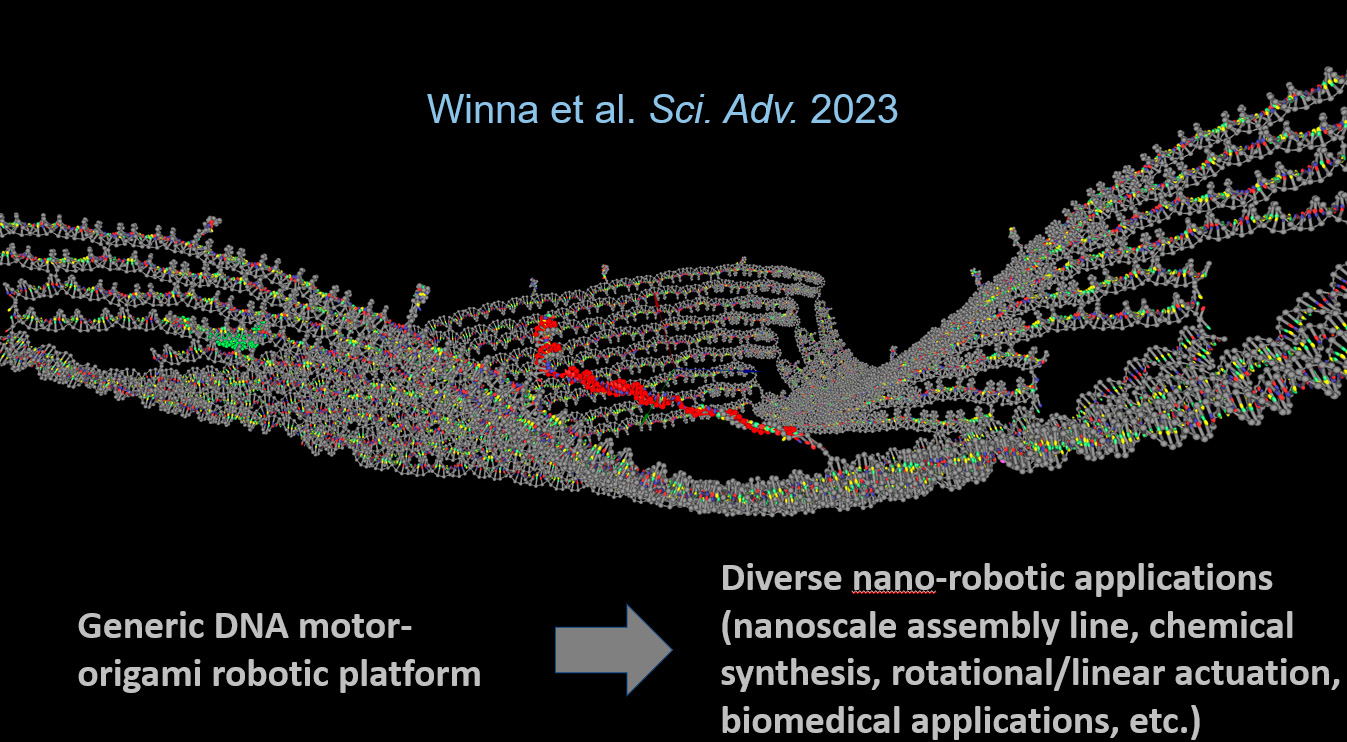
Email: phywangz@nus.edu.sg
Office: S16-07-07
Tel: +65 6516 2606
Current Research
Our Molecular Motors Lab develops artificial molecular motors and their technological applications. This is a realm of extreme single-molecule engineering but governed by the subtle science of stochastic thermodynamics. More specifically, our lab focuses on experimental development of translational artificial molecular motors, which differ from the rotational artificial molecular motor recognized by the 2016 Nobel prize in chemistry and perhaps have more technological applications.
Our lab invented the first light-driven translational molecular motor back in 2012 (Phys. Rev Lett. 109, 238104), and since then continues to develop advanced molecular motors that go beyond the early simplistic bridge-burning walkers for truly sustainable and self-directed motion. Our motors are engineered from individual DNA molecules, and fabricated using biophysical/biochemical techniques. Some motors are powered and remotely controlled by light; some motors operate autonomously by consuming chemical fuels. Currently we combine our DNA motors with larger DNA origami platforms to develop advanced nano-robots and artificial nano-muscles for real-world applications (biomedical nanotechnologies, nanoscale assembly lines, automated chemical synthesis, precision technologies, etc.).

Selected Publications
- T. Anderson, W. Wu, O. Sirbu, K. Tong, W. Siti, X. R. Liu, B. Kou, K. Murayama, H. Asanuma, Z. S. Wang*,”A light-powered single-stranded DNA molecular motor with colour-selective single-step control”, Angew. Chem. Int. Ed. 63, e202405250 (2024).
- W. Siti, H. L. Too, T. Anderson, X. R. Liu, I. Y. Loh, Z. S. Wang, “Autonomous DNA molecular motor tailor-designed to navigate DNA origami surface for fast complex motion and advanced nanorobotics”, Science Advances 9, eadi8444 (2023).
- X. R. Liu, I. Y. Loh, W. Siti, H. L. Too, T. Anderson, Z. S. Wang, “A light-operated integrated DNA walker–origami system beyond bridge burning”, Nanoscale Horizons 8, 827 (2023).
- M. Liu, J. Cheng, S. R. Tee, S. Sreelatha, I.Y. Loh, Z.S. Wang, ”Biomimietic Autonomous Enzymatic Nanowalker of High Fuel Efficiency”, ACS Nano 10, 5882 (2016).
- I.Y. Loh, J. Cheng, S.R. Tee, A. Efremov, and Z.S. Wang, “From Bistate Molecular Switches to Self- Directed Track-Walking Nanomotors”, ACS Nano 10, 10293 (2014).
- M. Liu, R. Hou, J. Cheng, I.Y. Loh, S. Sreelatha, J.N. Tey, J. Wei, and Z.S. Wang, “Autonomous Synergic Control of Nanomotors”, ACS Nano 8, 1792 (2014).
- Z.S. Wang, R. Hou, and A. Efremov, “Directional fidelity of nanoscale motors and particles is limited by the 2nd law of thermodynamics—Via a universal equality”, J. Chem. Phys. 139, 035105 (2013).
- J. Cheng, S. Sreelatha, R. Hou, A. Efremov, R. Liu, J.R.C. van der Maarel, and Z.S. Wang, “Bipedal nanowalker by pure physical mechanisms”, Phys. Rev. Lett. 109, 238104 (2012).
- Z.S. Wang, “Synergic mechanism and fabrication target for bipedal nanomotors”, Proc. Natl. Acad. Sci. U.S.A. 104, 17921 (2007).
